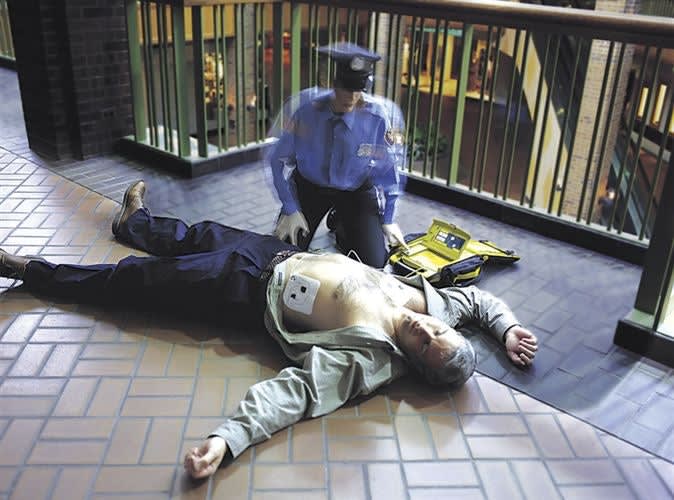Yet, in the past couple of years, the FDA's required AED training hours for first responders have dropped. When asked why Suffolk County is keeping the number of required training hours so high, Grennon explains, "while I agree with the heart association that cardiac defibrillators are simple life-saving devices that require little training, the machine can still be dangerous.
"An AED delivers an electric shock, and we're using the machine under some of the harshest of circumstances, whether it be inclement weather, or imminent danger from a suspect or fire."
Dr. Michael S. Erdos, State EMS Medical Director for Massachusetts and Medical Director for the North Suburban Emergency Medical Consortium, coordinates training for local police departments, as well as fire departments and Emergency Medical Services (EMS). He acted as the medical director for the Burlington Police Department. He says, "if you're CPR-certified already, training isn't a big deal."
But to get an AED program started for your department, you'll first need a medical director. If not to organize the training, you'll need one to give your department a prescription to purchase AEDs. It might sound funny, but the government is very serious about making sure first responders receive adequate training before using AEDs. If you don't know where to find someone to be a medical director, contact your local hospital and talk to other police departments, corrections facilities, firefighters, and paramedics in your area. AED manufacturers can also be very helpful.
Training generally consists of being familiarized with the AED unit and how it works, along with CPR. Then you must pass a practical exam in which you practice with a training unit on a mannequin.














